This article includes a list of general references, but it lacks sufficient corresponding inline citations .(May 2017) |
The Bloomsbury Group plays a prominent role in the LGBT history of its day.
This article includes a list of general references, but it lacks sufficient corresponding inline citations .(May 2017) |
The Bloomsbury Group plays a prominent role in the LGBT history of its day.
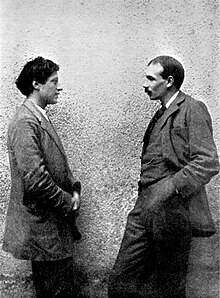
While still in the Bloomsbury area LGBT activity was all very much in a single group. For example, Duncan Grant, a homosexual with bisexual leanings, [1] had affairs with Maynard Keynes, James Strachey, Adrian Stephen, David Garnett and straight Vanessa Bell.
Names of LGBT people outside the Bloomsbury Group strictly speaking include Mary Garman, Nina Hamnett, Jane Ellen Harrison, Rupert Brooke and Arthur Hobhouse.
D. H. Lawrence had criticised the homosexual tendencies in the Bloomsbury Group, though close to the core members of the group [2]
Later the groups differentiated. Keynes married Lydia Lopokova, and gradually ceased having affairs with men. Other groups more or less split according to the location where they started to live.
Most of LGBT men in and around the Bloomsbury Group were conscientious objector during the war: they had to leave London in order to do manual labour on the land.
Lady Ottoline Morrell's extravagant parties no longer brought the group together, but during the First World War she did provide housing for conscientious objector Aldous Huxley at Garsington Manor, where he was married to Maria Nys after the war. D. H. Lawrence, another visitor of Garsington, befriended Huxley.
Also Duncan Grant and David Garnett had to work on the land as conscientious objectors during World War I. They started living with Vanessa Bell in Charleston Farmhouse.
Francis Birrell started a bookshop together with David Garnett later on.

Also during the First World War Lytton Strachey and Dora Carrington moved to Tidmarsh Mill House. Later (in a ménage à trois with straight Ralph Partridge) they moved to Ham Spray House.
Roger Senhouse, had been Strachey's last lover
E. M. Forster spent his time as conscientious objector in Egypt, and remained there some time after the First World War.
When returning to England his circle of LGBT friends and acquaintances included W. J. H. Sprott, J. R. Ackerley, Christopher Isherwood, Siegfried Sassoon, Forrest Reid and Benjamin Britten.
Virginia and Leonard Woolf first moved to Hogarth House in the London Borough of Richmond upon Thames, where they set up the Hogarth Press. Later they moved to Monk's House in East Sussex.
Katherine Mansfield and John Lehmann were LGBT acquaintances linked to Hogarth Press, the publishing company Virginia Woolf owned with her husband Leonard Woolf.
After Virginia Woolf had moved to Monk's House, she would meet Vita Sackville-West, writing her Roman à clef Orlando: A Biography about her. Woolf also met the LGBT people around her, including Harold Nicolson, Sackville-West's husband, Benedict Nicolson, their LGBT son and Violet Trefusis, her former lover. [3]
Composer and suffragist Ethel Smyth was another later acquaintance of Virginia Woolf. [4]

Adeline Virginia Woolf was an English writer. She is considered one of the most important modernist 20th-century authors and a pioneer in the use of stream of consciousness as a narrative device.
The Bloomsbury Group—or Bloomsbury Set—was a group of associated English writers, intellectuals, philosophers and artists in the first half of the 20th century, including Virginia Woolf, John Maynard Keynes, E. M. Forster and Lytton Strachey. This loose collective of friends and relatives was closely associated with the University of Cambridge for the men and King's College London for the women, and they lived, worked or studied together near Bloomsbury, London. According to Ian Ousby, "although its members denied being a group in any formal sense, they were united by an abiding belief in the importance of the arts." Their works and outlook deeply influenced literature, aesthetics, criticism, and economics as well as modern attitudes towards feminism, pacifism, and sexuality.
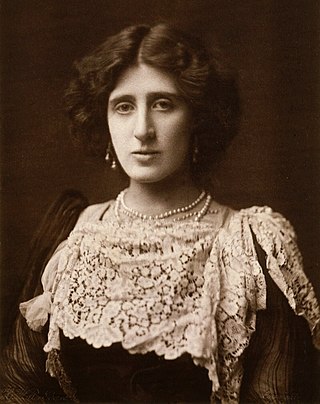
Lady Ottoline Violet Anne Morrell was an English aristocrat and society hostess. Her patronage was influential in artistic and intellectual circles, where she befriended writers including Aldous Huxley, Siegfried Sassoon, T. S. Eliot and D. H. Lawrence, and artists including Mark Gertler, Dora Carrington and Gilbert Spencer.

Duncan James Corrowr Grant was a British painter and designer of textiles, pottery, theatre sets, and costumes. He was a member of the Bloomsbury Group.
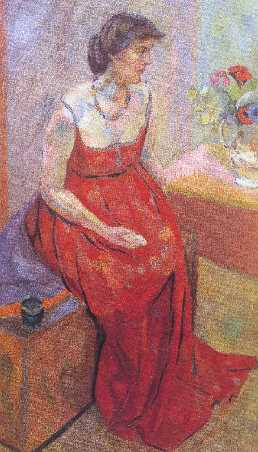
Vanessa Bell was an English painter and interior designer, a member of the Bloomsbury Group and the sister of Virginia Woolf.
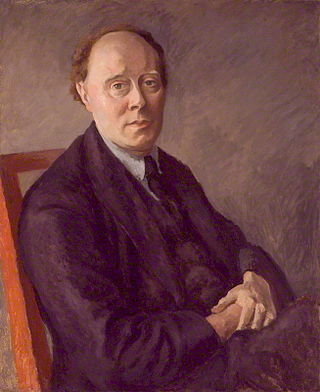
Arthur Clive Heward Bell was an English art critic, associated with formalism and the Bloomsbury Group. He developed the art theory known as significant form.

Garsington Manor, in the village of Garsington, near Oxford, England, is a country house, dating from the 17th century. Its fame derives principally from its owner in the early 20th century, the "legendary Ottoline Morrell, who held court from 1915 to 1924". Members of the Bloomsbury Group, the aristocratic Ottoline, and her wealthy husband Philip, were friends with an array of artists, writers and intellectuals, D. H. Lawrence, T. S. Eliot, E. M. Forster, Bertrand Russell, Aldous Huxley, Virginia Woolf and Siegfried Sassoon being among the visitors to their house. The manor was later owned by Leonard Ingrams and from 1989 to 2010 was the setting for an annual summer opera season, the Garsington Opera, which relocated to Wormsley Park in 2011. Garsington is a Grade II* listed building.

Victoria Mary, Lady Nicolson, CH, usually known as Vita Sackville-West, was an English author and garden designer.

Violet Trefusis was an English socialite and author. She is chiefly remembered for her lengthy affair with the writer Vita Sackville-West that both women continued after their respective marriages. It was featured in novels by both parties; in Virginia Woolf's novel Orlando: A Biography; and in many letters and memoirs of the period roughly from 1912 to 1922. She may have been the inspiration for aspects of the character Lady Montdore in Nancy Mitford's Love in a Cold Climate and of Muriel in Harold Acton's The Soul's Gymnasium (1982).
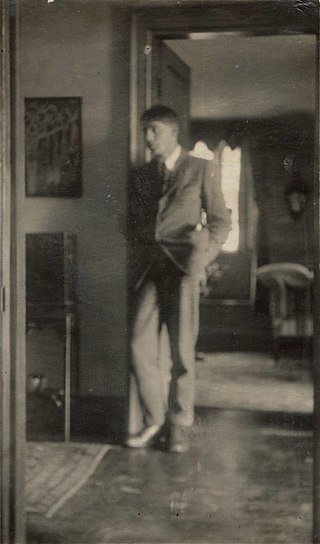
David Garnett was an English writer and publisher. As a child, he had a cloak made of rabbit skin and thus received the nickname "Bunny", by which he was known to friends and intimates all his life.

Angelica Vanessa Garnett, was a British writer, painter and artist. She was the author of the memoir Deceived with Kindness (1984), an account of her experience growing up at the heart of the Bloomsbury Group.

Monk's House is a 16th-century weatherboarded cottage in the village of Rodmell, three miles (4.8 km) south of Lewes, East Sussex, England. The writer Virginia Woolf and her husband, the political activist, journalist and editor Leonard Woolf, bought the house by auction at the White Hart Hotel, Lewes, on 1 July 1919 for 700 pounds, and received there many visitors connected to the Bloomsbury Group, including T. S. Eliot, E. M. Forster, Roger Fry and Lytton Strachey. The purchase is described in detail in her Diary, vol. 1, pp. 286–8.

Adrian Leslie Stephen was a member of the Bloomsbury Group, an author and psychoanalyst, and the younger brother of Thoby Stephen, Virginia Woolf and Vanessa Bell. He and his wife, Karin, became interested in the work of Sigmund Freud, and were among the first British psychoanalysts.
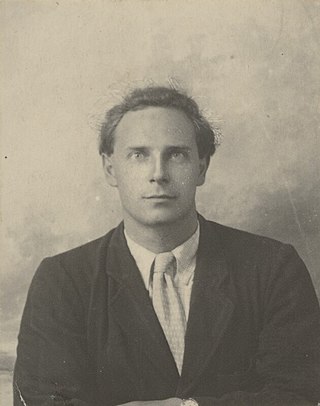
Reginald Sherring Partridge,, generally known as Ralph Partridge, was a member of the Bloomsbury Group. He worked for Leonard Woolf and Virginia Woolf, married Dora Carrington and then Frances Marshall, and was the unrequited love of Lytton Strachey.
Francis Frederick Locker Birrell was an English writer and bookseller.
Gloomsbury is a BBC Radio 4 comedy sitcom which gently parodies the lives, loves and works of the Bloomsbury Group. It is written by Sue Limb and five series have been produced, in 2012, 2014, 2015, 2017 and 2018.
Life in Squares is a British television mini-series that was broadcast on BBC Two from 27 July to 10 August 2015. The title comes from Dorothy Parker's witticism that the Bloomsbury Group, whose lives it portrays, had "lived in squares, painted in circles and loved in triangles".
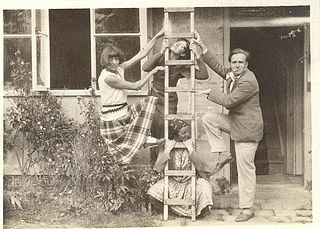
Stephen Tomlin was a British artist associated with the Bloomsbury Set. He was the youngest son of the judge and law lord Thomas, Lord Tomlin of Ash.
Mary Barnes Hutchinson was a British short-story writer, socialite, model and a member of the Bloomsbury Group.
denys trefusis and violet trefusis.